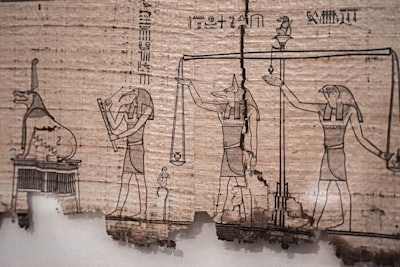Revealing Ancient Egypt’s Genetic Past: The First Complete Genome From the Age of the Pyramids
Archaeogenetics is rewriting our understanding of ancient Egypt, and the latest breakthrough—the whole genome sequencing of a 4,500-year-old skeleton found in a pottery coffin—has scientists and history buffs alike buzzing with excitement. As the fascination with Egypt’s dynasties persists, cutting-edge DNA analysis technology is providing surprising answers about who the ancient Egyptians were, their origins, and their enduring connections to the modern world.
Why Is Ancient Egyptian DNA Research Making Headlines?
Keyphrase: Ancient Egyptian DNA, genome analysis
For centuries, questions have swirled around the ancestry of ancient Egyptians: Were they native to the Nile Valley, or did they descend from migrants from the Fertile Crescent or Sub-Saharan Africa? Answers have eluded researchers due to Egypt’s hot climate, which rapidly degrades DNA. Now, the sequencing of a remarkably well-preserved genome from a man buried circa 2500 BCE in a pottery vessel is offering the first direct glimpse into Old Kingdom genetics.
Key findings:
- The individual had north African Neolithic ancestry with about 20% genetic input from the Fertile Crescent (modern Middle East).
- Physical traits included dark skin, brown hair, and brown eyes, supporting diverse perspectives in debates about ancient Egyptian identity.
- DNA preservation may be linked to the unusual burial method—sealed in pottery within a rock-cut tomb.
How Ancient DNA Is Changing Egyptian Archaeology
Keyword: Ancient Egypt genetics, archaeogenomics
This genome, published in Nature, isn’t just a curiosity—it’s reshaping the field. Here’s why:
- Understanding Ancient Egyptian Population Dynamics: Genomic data clarifies interactions between Egypt, the Middle East, and Africa, backing up archaeological evidence of trade and migration.
- Unravelling Occupational Mysteries: Bone markings indicated the man might have been a potter or craftsman—a career inferred from the wear patterns and comparison with tomb paintings.
- Preservation Strategies: Insights from this study could help target other tombs or remains likely to yield usable DNA, vital for future research.
What Ancient Genomes Reveal About Social Structure in Egypt
Keyword: Ancient Egyptian social history, burial practices
Burial in a pottery coffin within a high-class tomb was rare for non-elite workers. The find raises questions about social mobility, the status of skilled artisans, and unique funerary customs before the age of widespread mummification. Did exceptional skill or favor allow some workers to receive elite burials? As more genomes are sequenced, we may learn if this case was unique or part of a broader, overlooked tradition.
Comparing Ancient and Modern Egyptian DNA
Keyword: Ancient vs. modern Egyptian DNA, Egypt human genetics
With ongoing studies, geneticists hope to paint a comprehensive picture of how ancient Egyptians are related (or not) to modern populations along the Nile and beyond. This could clarify ongoing debates about Egypt’s genetic legacy, population continuity, and influences from Africa, the Middle East, and the Mediterranean.
The Future of Ancient Egyptian DNA Research
Keyword: Ancient DNA technology, genome sequencing Egypt
This first genome is only the beginning. Researchers at the Francis Crick Institute and Liverpool are now targeting other museum collections, especially remains stored in Britain, to build a public database of ancient Egyptian genomes. Broader sampling will enable:
- Tracking genetic changes across dynasties and periods
- Exploring the impacts of invasions, migrations, and trade
- Answering long-standing questions about ethnicity and ancestry in the world’s first great civilization
FAQs: Ancient Egyptian Genomics
Q: Why is it so hard to get DNA from ancient Egypt? A: Egypt’s hot, arid climate typically destroys DNA, but rare preservation cases (like sealed pottery burials) offer exceptions.
Q: What can DNA tell us that pottery or tombs can't? A: Genetic analysis reveals ancestry, migration patterns, and even physical traits—unlocking clues not visible from artifacts or art.
Q: How does this change our view of ancient Egypt? A: It brings science into debates about origins, identity, and connections with other ancient peoples, grounding historical narratives in genetic data.
Q: Will more ancient Egyptian genomes be sequenced? A: Absolutely—this is a fast-growing field, and museums worldwide may hold more suitable remains.
Conclusion: Ancient Egyptian Genomics Is the New Frontier
As genome sequencing technology improves and archaeologists pinpoint remains ripe for analysis, expect a tidal wave of discoveries about ancient Egypt’s population, culture, and people. Whether you’re interested in genetics, history, or the enduring mysteries of the Pharaohs, the coming decade promises surprising answers—and new questions—about one of humanity’s greatest civilizations.

Comments
No comments yet. Be the first to comment!